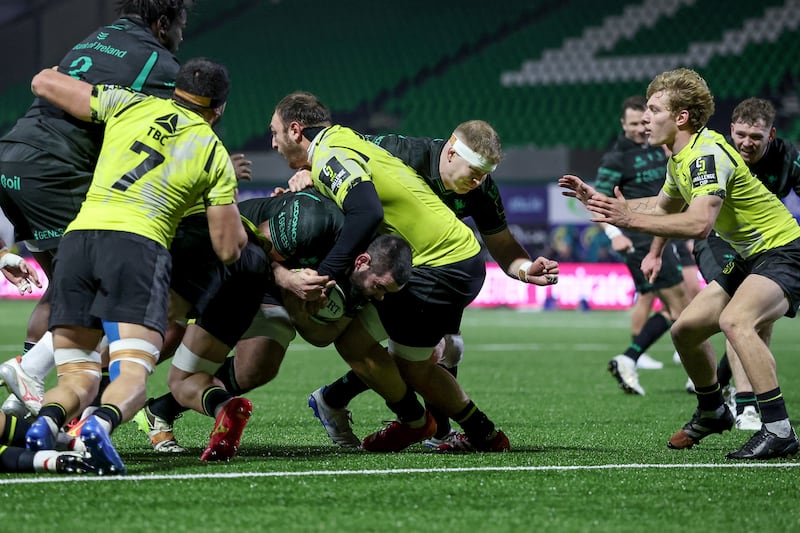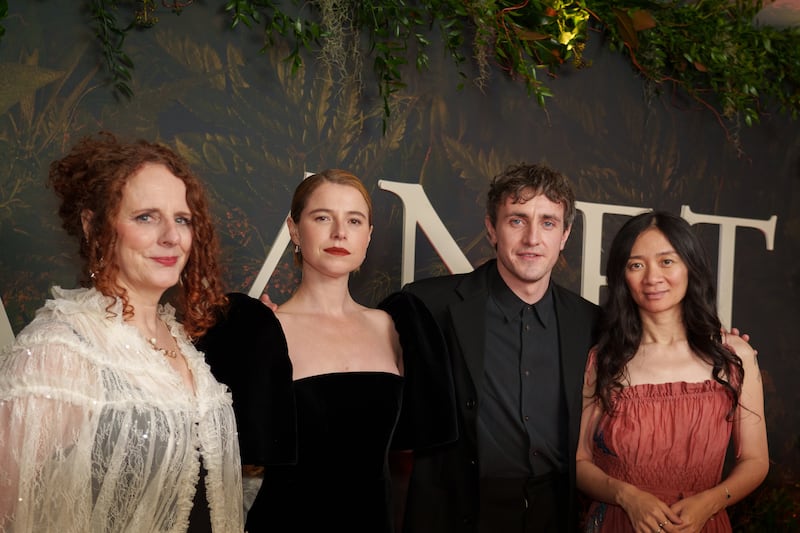It is Wednesday afternoon in Mercy Secondary School, Inchicore. There is a man in reception talking about robots. He has one in his bag to show some students who are learning about the various applications of computer technology in the 21st century.
Another group of students is visiting Google today, while principal Treasa Leahy is organising the final phase of the 21st Century Learning Space, a "student-centred, collaborative, technology-mediated classroom" that will be launched at the school later in the month.
For English and history teacher Sinéad O’Sullivan, it is business as usual. She has assignments to correct, lessons to prepare and a Twitter account to keep tabs on. She is one of the teachers behind the school’s digital literacy course, a pilot “short course” in junior cycle, which has been running at the school for the past two years. (The NCCA has also developped a digital media literacy short course, see panel.)
O'Sullivan did a postgrad in IT before training as a teacher and had "always been interested in the idea of using that somehow in a school context". When the school was discussing options for developing a short course in accordance with the new Junior Cert curriculum, the idea of a course on digital literacy immediately came to mind.
“That is where the students’ world exists: online,” O’Sullivan says. Developing a course that reflected the technological interest of teenagers was an opportunity to “bait them on a hook, to get them interested in learning by making it relevant”.
Basic functions
As O’Sullivan began gathering material for the course, her starting point was a crucial question: what skills will the students of today need for the working world? With this in mind, she introduced the students to basic functions such as sending emails and attachments, rudimentary coding, website design, Powerpoint, spreadsheets and how to use Google Drive to share folders and information with each other.
These practical lessons were complemented by a module on the digital citizen, to get students thinking about “how to use the internet and social media in a responsible way, how to stay safe online and mind themselves”. The virtual world is “a big part of their identity”, O’Sullivan says, “and can have a huge impact on their mental health and wellbeing”. Touching on privacy and cyberbullying, the coursework intersected with their CPSE coursework.
One of the biggest challenges O’Sullivan encountered in developing the course was “keeping it relevant: the technological world moves so fast that you have to keep updating the course constantly. Some of the stuff I used in the first year of the course is already outdated. You could easily have a case where the students know more than you do.”
Resources are a second challenge, she says: “This sort of course needs a certain base level of e-technology, and not all schools will have that.”
O’Sullivan and her colleagues reflected on the key skills underlying the new Junior Cert framework: literacy, numeracy, self-management, health and wellbeing, communication, creativity, co-operation, managing information and thinking. They also reflected on traditional subjects and how those skills might not necessarily be developed within those courses: was there any way that digital literacy might contribute towards learning objectives elsewhere in the curriculum?
Student blogs
Continuous assessment proved to be vital, as it enabled O’Sullivan to tailor the course to the students’ needs. It was a dialectical rather than a didactic approach, and this encouraged students to reflect on their own learning skills, while weekly presentations enabled them to refine their critical awareness and oral literacy.
The blogs the students created worked well for assessment, O’Sullivan says. They function as “a sort of live journal to reflect on what they were learning”.
O’Sullivan says what the students learn in digital literacy “links very well with their learning strategies in other courses. They are much better able to work independently. They have the facility to do deeper research on the web.”
The course has also created a general sense of excitement about learning, “particularly for weaker students. Because the subject feels more relevant to their lives, it is easier to get them motivated.” O’Sullivan often uses technological tools to enhance learning in her other classes.
In English, for example, she uses Twitter as a “challenge in brevity”, asking students to tweet as a character or summarise a poem in 140 characters. A common assignment is the “prop box”, where students create visual collages using Powerpoint to illustrate themes or characters from literature.
What O’Sullivan was most struck by, however, was how much better the students worked in a group setting.
The 21st Century Learning Space that Mercy opened this month also reflects this. Students were involved in designing it. They researched classroom layouts and methodologies and found that, although 87 per cent of students felt they learned and retained more from project and collaborative work, more than 90 per cent of classrooms are set out in rows and lines. The group emphasis and technological tools of the 21st Century Learning Space will enable them to learn better.
The second-year students, meanwhile, are eager to share their enthusiasm about the course. Some of them tweet their favourite aspects of the course to me. Others are happy to elaborate face to face.
Courtney Carraig (14) likes digital literacy because it “is more practical than other classes”. Indeed, each of the students mentions the functional utility of the coursework, particularly learning to protect themselves on the internet.
“I didn’t know about privacy settings and all that before,” Carraig says. “But now I know how to make sure only people I know can see my Facebook page.”
Kim Hickey (14) enjoys that “we get to discover things and try them out for ourselves”. Nicole Stephens (14) thinks the “projects we get to do are really good, like finding out things about social media sites like Facebook, Twitter, Instagram, and how to make a blog and design it”.
Learning strategies
Jody White (14) says the learning strategies have helped in her other classes. “When I have to do a project for another subject, I can use Powerpoint, or, if I miss a class, I can get notes and everything on email.” It helps in English “because some of the projects make you summarise a character and that is good for writing, and in history you get better at doing research online”. In art, you can use “the computer or iPad graphic design”.
The only criticism the girls have of the course is “that we only have it twice a week”, as Stephens puts it, and “that it doesn’t cross over to more subjects”.
“We never use [computer skills] in geography or Irish,” White says. “If [there was a digital element] in those subjects it would be easier to learn.”
The success of the course means it is now mandatory at Mercy, rather than optional. Principal Treasa Leahy says: “We have found digital literacy is helping the students to manage and develop themselves as better learners across the board.
“It gives them a basic foundation of skills for the new Junior Cert [when it is introduced] and the best thing is that it is not just something we [staff] have observed; the students would say that themselves. They are visibly more engaged with the learning experience, and that enables us to improve the teaching experience.”
The current third years at Mercy will be the first to finish the Junior Cert with a course in digital literacy behind them, and Leahy is “looking forward to observing how they perform in their exams and in transition year. I think it will have a big impact on what they can achieve in TY, because so much of what the students learn – about study and motivation, setting plans for themselves, reflecting and improving their learning experience, hearing and receiving feedback from teachers and peers – these are skills they already have. I have no doubt the impact will be profound.”
BIG IDEAS: A SHORT GUIDE TO SHORT COURSES
The “short course” is a curriculum component in the planned junior cycle. Reform of the junior cycle remains at an impasse because of objections by teacher unions to school-based assessment.
Short courses in social, personal and health education; civic, social and political education; PE; and others have been developed by the National Council for Curriculum and Assessment (NCCA) and build on the existing junior cycle syllabuses.
Schools and external groups can also develop their own short courses to suit their students' interests. A short course in theatre and citizenship, for example, was developed by Larkin Community College, Dublin, with the Abbey Theatre.
The NCCA offers nine short courses to schools so far, which are designed for 100 hours of student engagement over three years and can be used “off the shelf” by schools. They include:
- Artistic performance: A short course in artistic performance to engage students in artistic practices with others, with a structure to facilitate collaborative and individual imaginative and creative initiatives, leading to a group performance.
- Chinese language and culture: To enable students to reach basic proficiency in spoken and written Mandarin Chinese, to develop their cultural and intercultural awareness, and learn to plan and evaluate their progress in learning Chinese.
- Coding: This aims to develop students' ability to formulate problems logically, to design, write and test code through developing programmes, apps, games, animations or websites, and to learn about computer science.
- CSI science: This helps to develop basic science process skills, and other key skills for life and learning, such as working collaboratively, planning sequentially and thinking logically. The skills gained through basic science can be used by the student in many areas.
- Digital media literacy: This aims to extend and refine students' ability to use digital technology, communication tools and the internet creatively, critically and safely in support of their development, learning and capacity to participate effectively in social and community life.
- Caring for animals: To develop students' knowledge and cognitive, social and practical skills in learning about and caring for an animal.



















